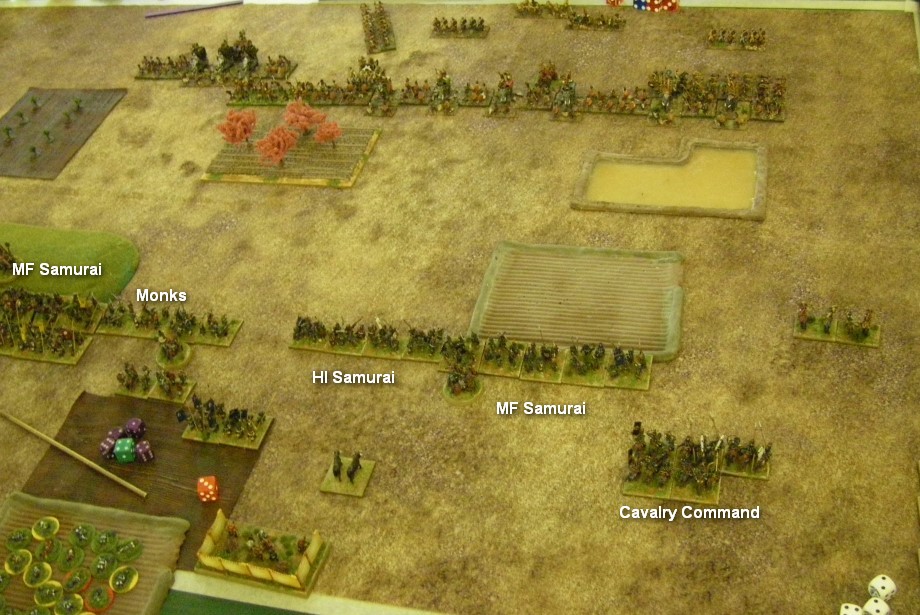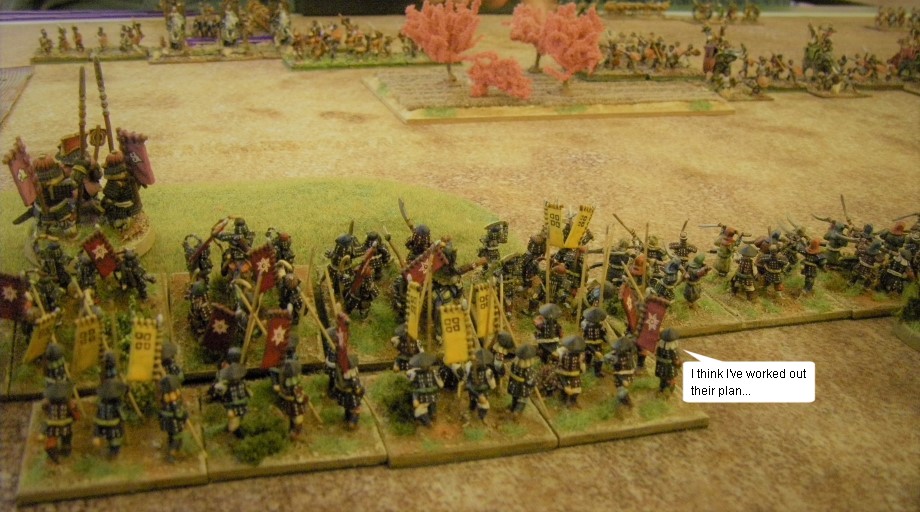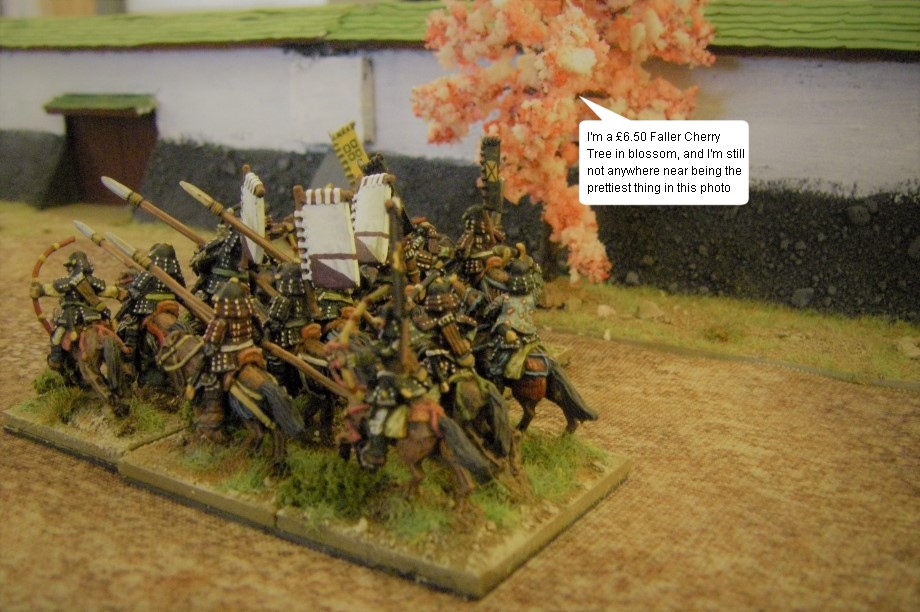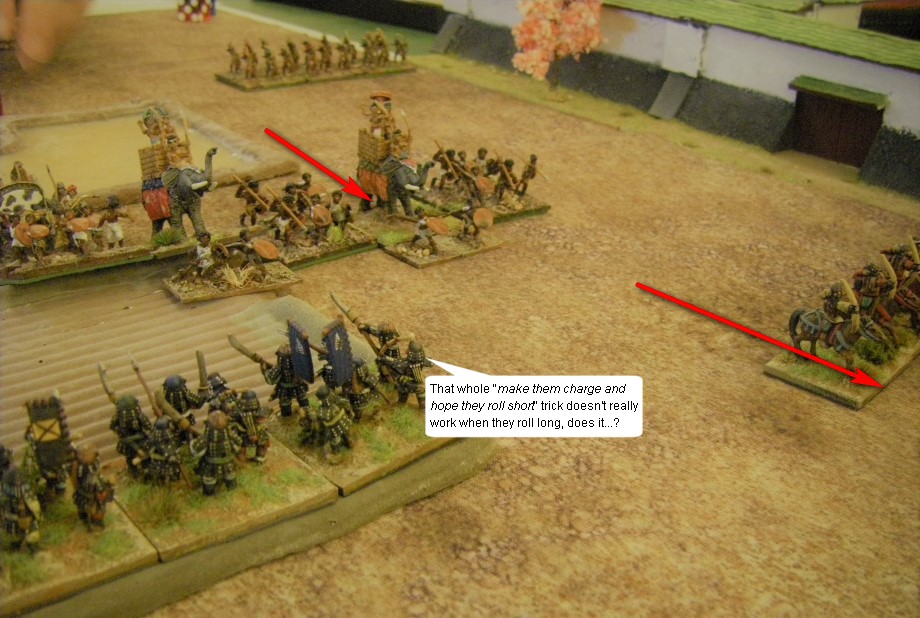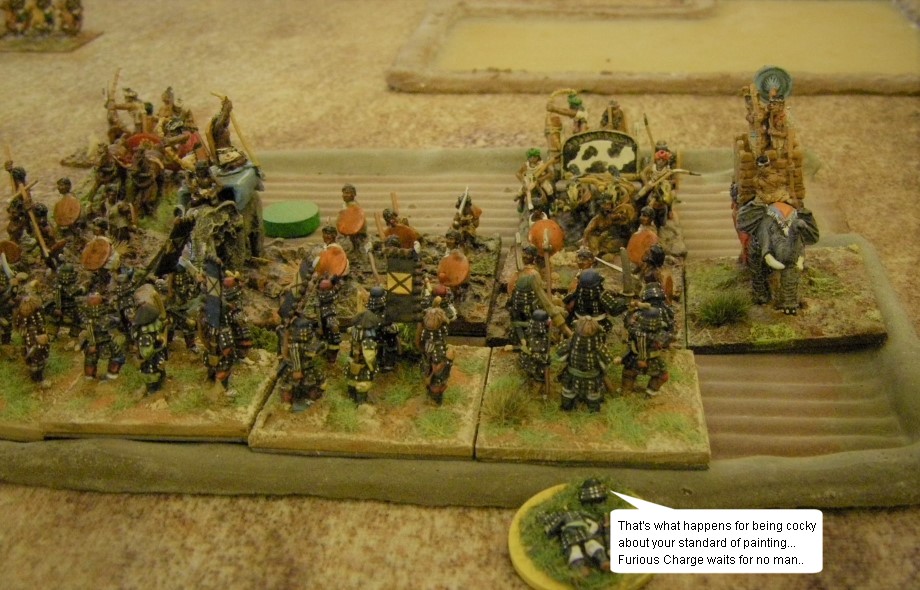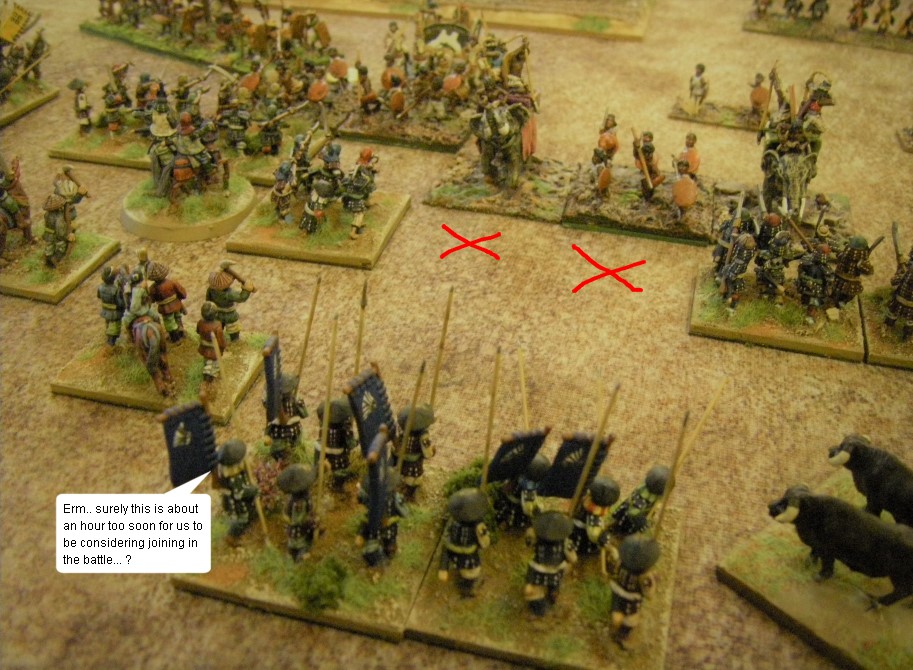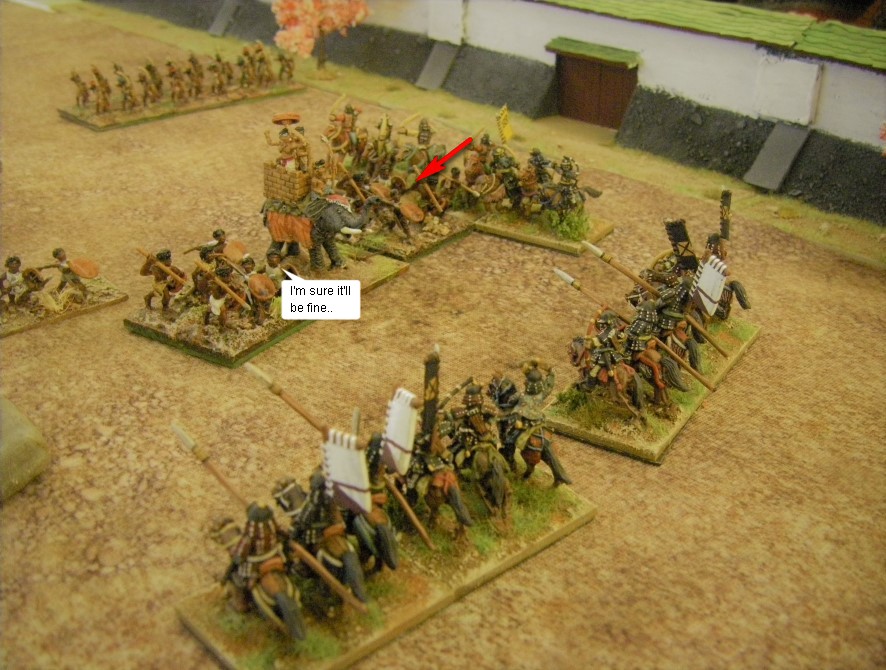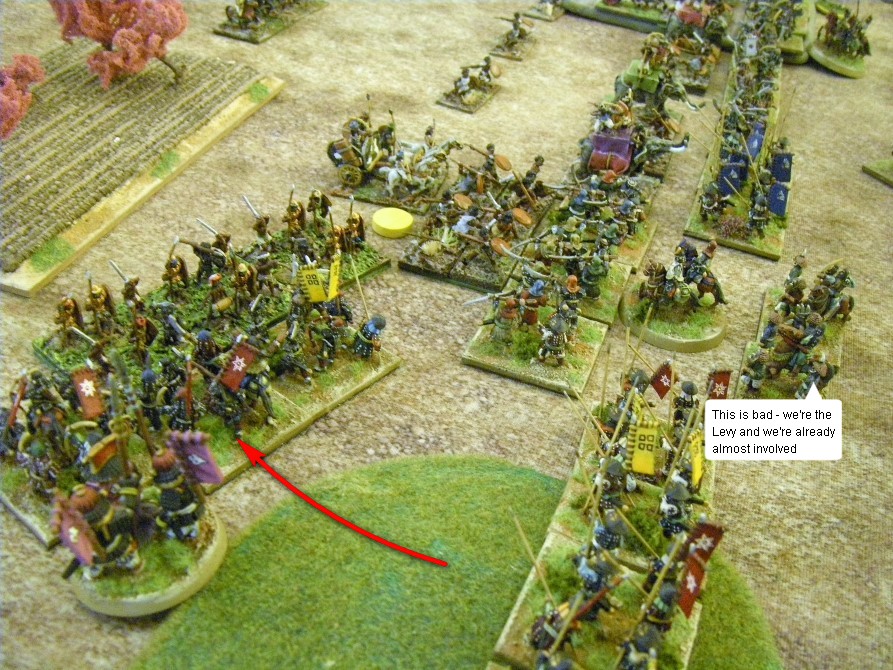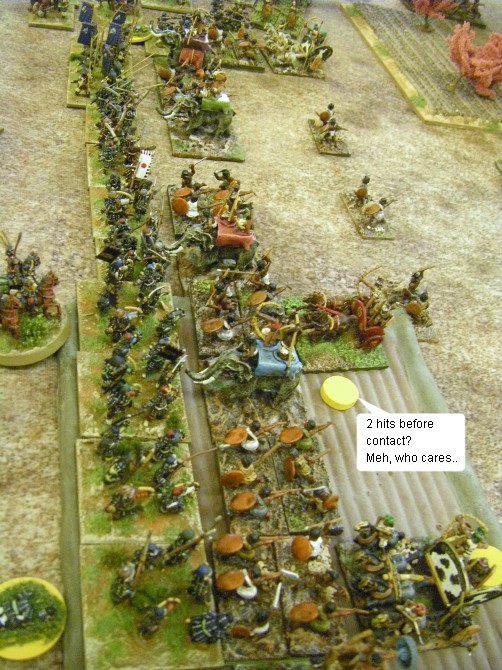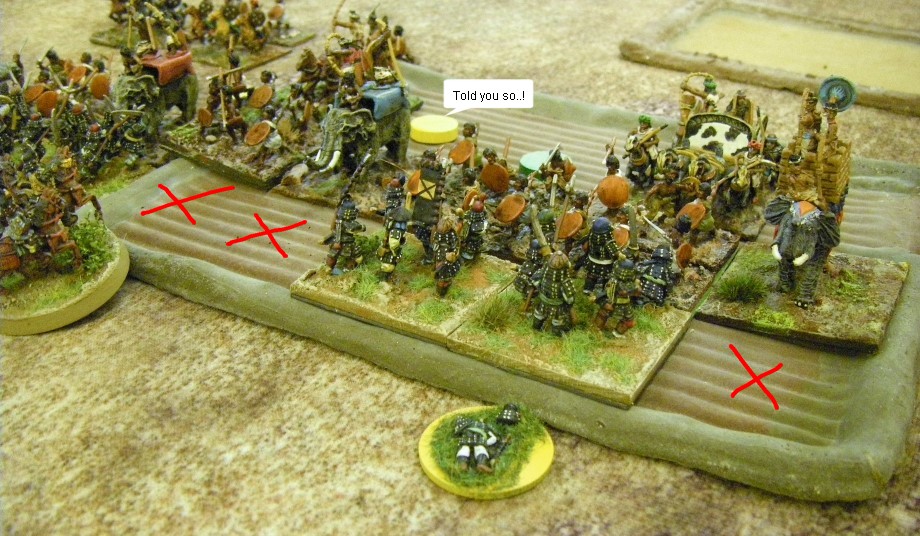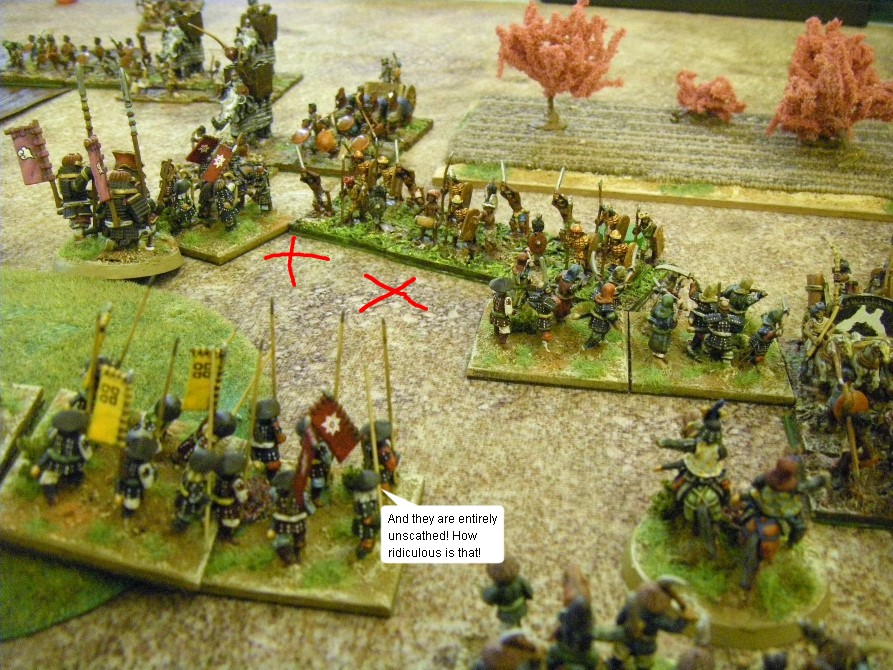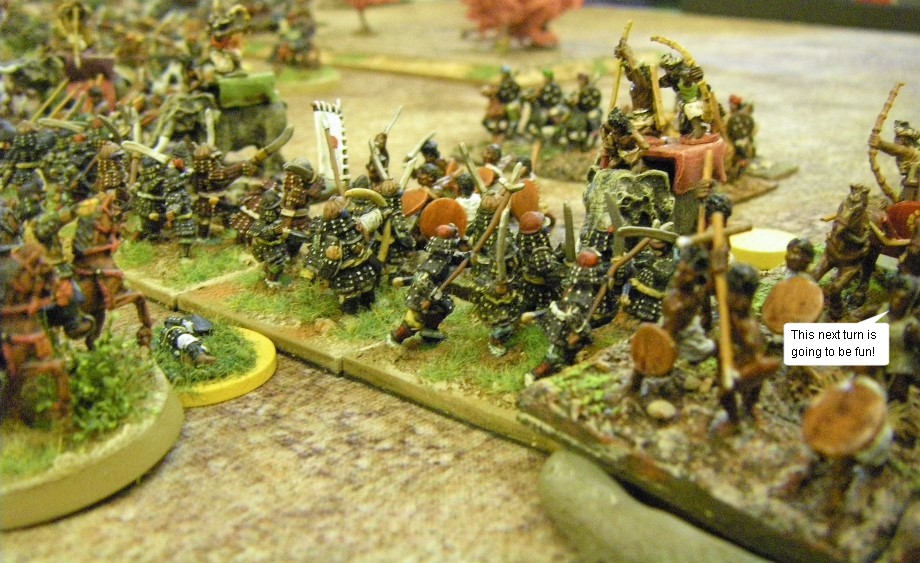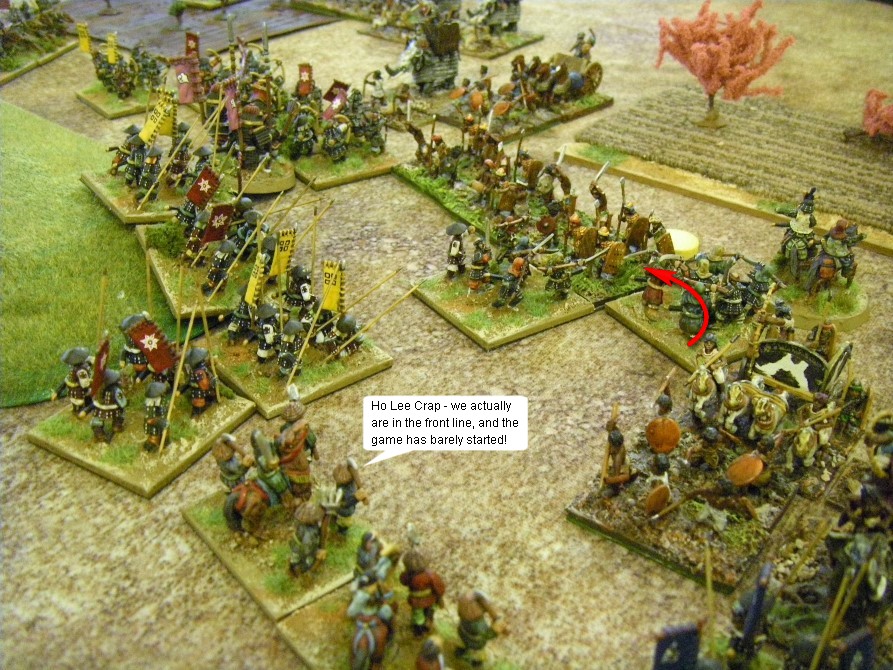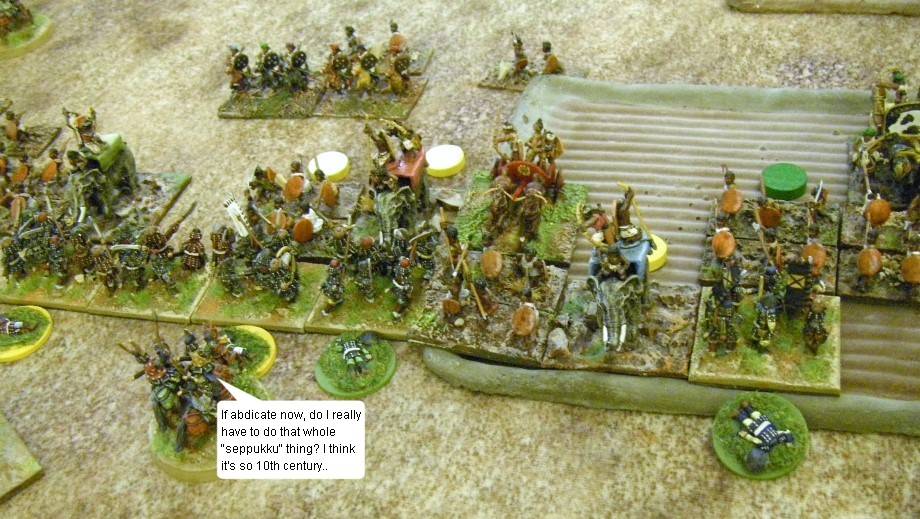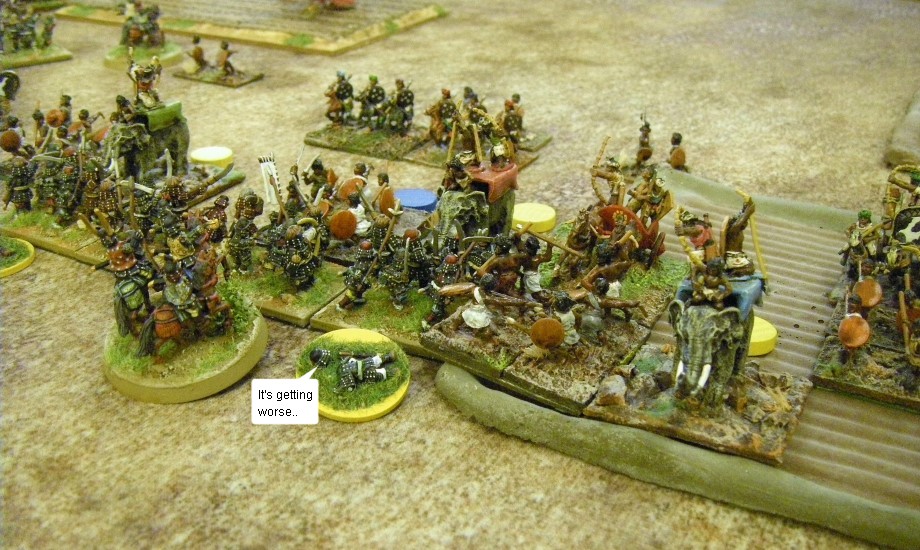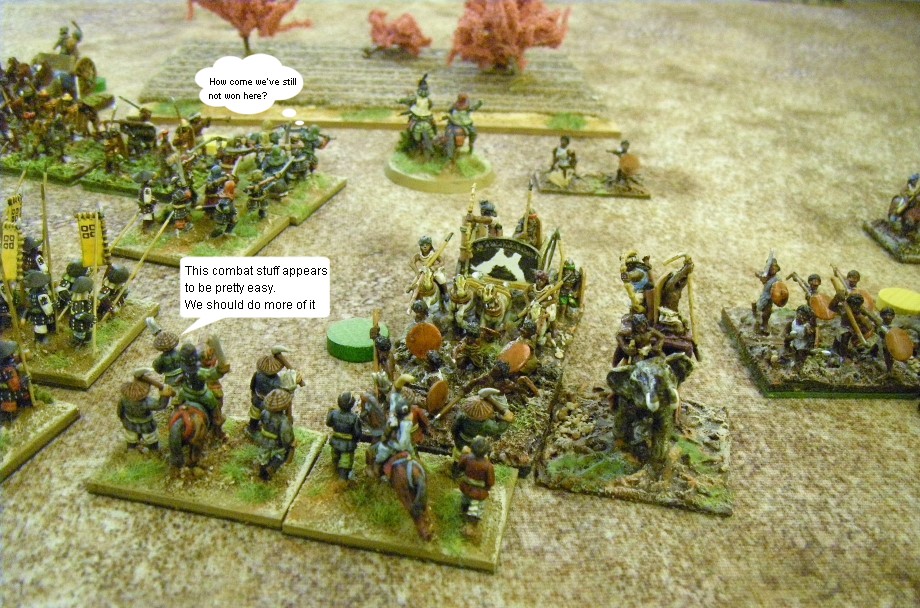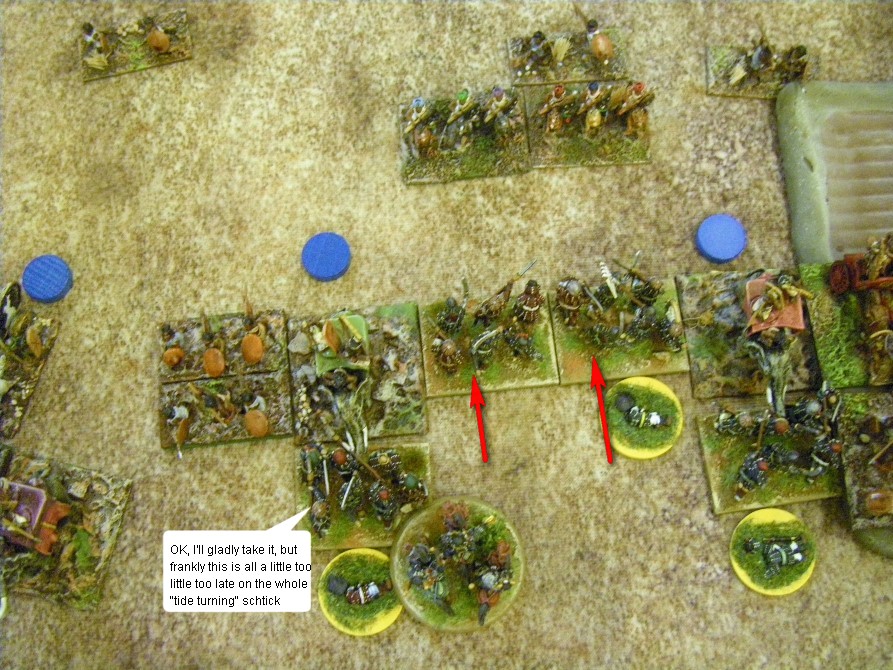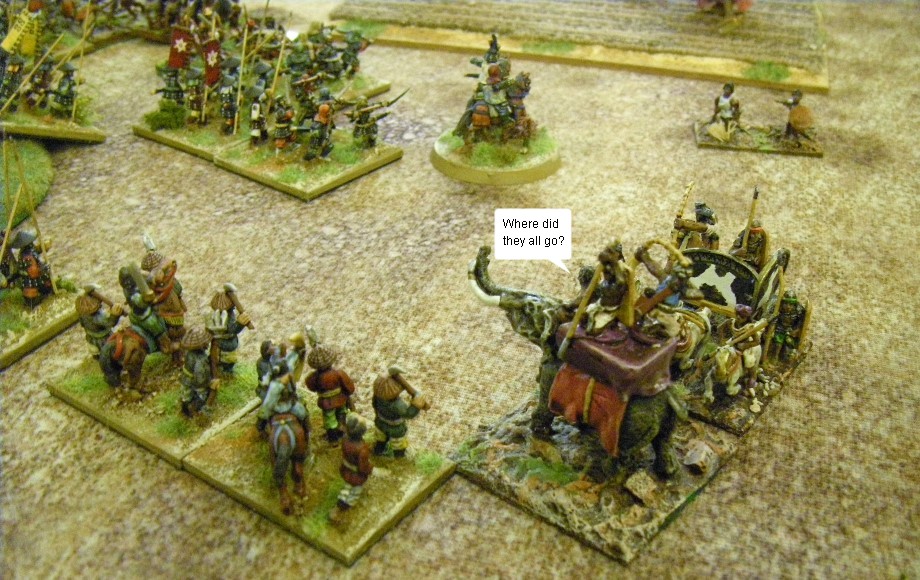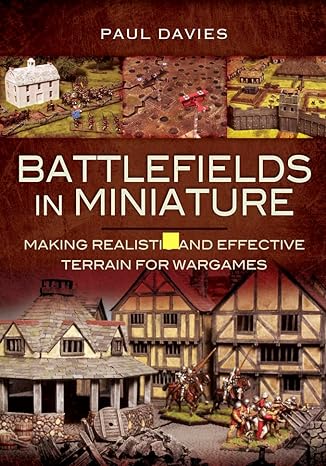Dark Ages at the Burton Doubles 2018
Samurai vs Tamil Indian
Game 3 Samurai vs Feudal English
Game 4 Samurai vs Tamil Indian
Enrich your experience of reading this report by streaming or download a podcast featuring photo-by photo running commentary on the game from the Madaxeman.com Podbean site (Download this episode (right click and save), or stream it now by pressing "play" below), or see the whole thing with audio and video on Youtube
The Tamils - another entirely different variety of army for the currengtly-unbeaten samurai to get their teeth and katanas into was what faced us across the table at the end of the second day of competition.
The lists for the Samurai and Tamil Indian from this game, as well as all the other lists from the games at Burton_Doubles can be seen here in the L'Art de la Guerre Wiki.
Having successfully navigated a proper Sunday lunch for well under a tenner the afternoon was something the Samurai felt was within their tactical nous to navigate - especially as the opposition were almost certainly to have a big solid line of near-identical troops all along it. And so it transpired
 |
The terrain had thrown up a handful of fields, an orchard (put there to reduce enemy bowfire) and a gentle hill nestled at the front of our deployment area. The approach was pretty straightforward - brace for impact and hope to do as much shooting as possible before the enemy arrived. Just to keep things interesting we had also deployed the Cavalry command on the somewhat open right of our army, on the assumption that the Tamils would struggle to respond to a mobile threat in this area. |
 |
Right from the off the Samurai climbed the not-quite Mount Fuji hill, giving them a seemingly unassailable combat advantage against the advancing Indian hordes. |
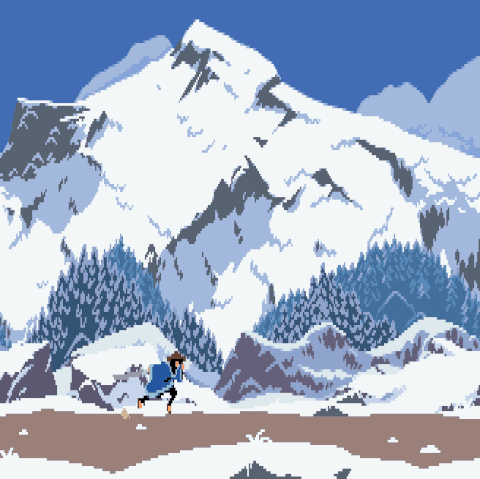 |
The Tamils were not mucking around, and neither were we. With limited tactical innovation and a hitherto entirely justified belief in the martial superiority of our well painted foot soldiers there was every expectation that an almighty Sumo-style clash of forces would result in the Samurai coming out marginally on top
War Elephants vs Lone Soldier
With the Waterway dice roll failing to succeed, the Ninja-tastic Wall had been pushed back a few inches to demarcate the edge of the table. Nothing too tactical was happening and so it seemed a good opportunity to take some artistic closeup shots of the men in action.

With the mounted wing not that keen to engage with the Elephantry at the end of the Tamil line, the main body of Samurai Elite Bowmen and Swordsmen were polishing their blades and notching their bows as the enemy force advanced - each elephant screened as usual by a lone javelin-armed light infantryman
Up on the hill the Samurai were kings of all they surveyed - and what they surveyed was a herd of elephants off in the far distance, snorting and harrumpfing as they too itched to get into close quarters combat. |
After some frankly disappointing shooting the two lines clashed at the right hand end of the Japanese line with an almighty roar. Impetuous swordsmen flooded forward in perfect lock-step with their elephant escorts into the solid line of Japanese military expertise that made up the Samurai formation. Swords long and short swung dramatically as the two sides closed to nostril-gazing distances and started to hack big lumps out of one another.
Yet More Mad Japanese Sh-t
Galloping Godzillas! With the battle already in full swing on our right, the Warrior Monks were also keen to get into combat - hurling religious incantations and whirling their bladed weapons above their heads they flooded forward from the Japanese army's start line and hurled themselves at the opposition with grim abandon.
|
Yes - tactics did exist! With the Tamil army fully committed its generals had little appetite or ability to manage the flank guards, and soon Samurai cavalry were swarming all over the no-isolated formation of Tamil warriors and elephants. Already stripped of their protective Light Foot by deadly shooting, the elephants on this end of the line looked in some peril and realised that they could well soon end up as a new type of sushi |
 |
The Samurai were now bracing for combat all along the line as the two centres approached to charging distance. With the chopstick-tastic Monks somewhat bogged down but slowly gaining the upper hand the Samurai were starting to realise just how numerous the Tamil army was - to match its frontage the Japanese generals were having already to push forward Mediocre Spear-armed Ashigaru - not ideal opponents for charging elephants.
One last round of shooting before the lines clashed produced a scattering of hits on the advancing Sri Lankans, enough to make things interesting but falling short of making them 'good' by some distance.
The English however were equally capable of a cowardly retreat in the face of superior quality enemy. As the Samurai looked out from the paddy field, the enemy turned about and fell back in a feigned retreat which was about as convincing as Sean Connery's Japanese disguise in You Only Live Twice
How will you know when you've met a ninja?
You won't, but I'll pass the message on to your next of kin
The Tamils charged home faster than a bullet train in a flurry of swords, trunks and tusks - an onslaught the Samurai suddenly appeared utterly unable to resist! Despite their Superiority, despite their Swordsman ability cancelling the Impact of the enemy infantry, Samurai were simply picked up and tossed to the 4 winds by the dice-led ferocity of the Tamil assault leaving in their wake a gaping hole and a pachinko machine winning spin's worth of counters all along the Samurai lines. Ouch!
War Elephants
With the main battle already looking deeply grim, the Samurai on top of the hill quickly realised that the game could be lost without the Tamils facing them even needing to consider an attack on ther fortified position. Standing in a castle whilst watching their colleagues die in droves was no way for a Samurai to behave and so the Japanese warriors unsheathed their swords and charged down the hill in support of the Monks.
|
Sri Lankan infantry were now flowing into the gaps that had already opened up all along the Samurai line - and with a far higher per-unit troop cost the Japanese army had little of any reserves with which to contest and plug these gaping chasms in their military competence. Flank attacks were coming. |
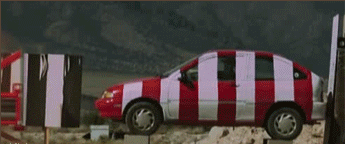 |
As the Samurai continued to flood down the hill, the Tamil infantry facing them were digging in stoically against the Japanese assault. The stubborn southern Indians refused to yield ground even as their colleagues elsewhere on the battlefront were taking ground and taking liberties with glee from the shellshocked Samurai.
As dark storm clouds gathered in the land of the Rising Sun a temporary respite from the relentless pummelling occasionally shed light on the darkness into which the Japanese army was even now descending - the Tamils were taking hits and creeping ever closer to destruction, but seemingly for every hit inflicted the Tamils were trading telling blows and causing dangerous markers of their own to spring up - and with the inexorable logic of a larger army in their favour this was a trade they could well afford.
Samurai battles
Even the swirling, command and control -rich Samurai cavalry force was finding it impossible to crack the high-rolling expertise of the Tamil formations. Flank attacks were stalling, and attempts to ride down second string bowmen in the open were faltering - the advantage here had proved fleeting and ultimately illusory.
How well do these troops fight then?
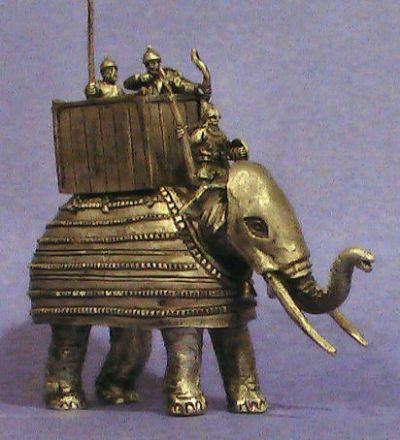 The Death Star is a commonly seen formation in which 2 Medium Foot (most usually Swordsmen) operate together with an Elephant nestled between them. The combination has a decent table-filling width of 3 MU and the combination of the Elephant with the foot serves to protect the Medium Foot from their natural enemies, opposing mounted troops, as any mounted in contact with the Elephant, even just at a corner, will be at a -1 in all combats against the infantry. The Death Star is almost always seen initially with a Light Foot stuck to the front of the Elephant to protect it from shooting. Elephants can't rally off hits, so making sure they are 100% intact when they hit the enemy is vitally important - probably sufficiently important as to allow the LF to die to sustained shooting rather than pulling it back once it takes a single hit as this would then expose the Elephant.
The Death Star is a commonly seen formation in which 2 Medium Foot (most usually Swordsmen) operate together with an Elephant nestled between them. The combination has a decent table-filling width of 3 MU and the combination of the Elephant with the foot serves to protect the Medium Foot from their natural enemies, opposing mounted troops, as any mounted in contact with the Elephant, even just at a corner, will be at a -1 in all combats against the infantry. The Death Star is almost always seen initially with a Light Foot stuck to the front of the Elephant to protect it from shooting. Elephants can't rally off hits, so making sure they are 100% intact when they hit the enemy is vitally important - probably sufficiently important as to allow the LF to die to sustained shooting rather than pulling it back once it takes a single hit as this would then expose the Elephant.
Elephants have very good combat factors against most types of foot anyway, as do Swordsmen, so the effect of all three hitting an enemy can be devastating. If the infantry are Impetuous or have Impact anyway the entire formation can do very serious first-round damage even to formed close formation troops.
|
The Samurai line was being rolled up by the waves of aggressive Tamil pedestrians - and the Japanese had no answer. This was a depressing time for the legendary Japanese warriors, as they saw death coming from their flanks, but were too busy contesting their frontal opponents to react. |
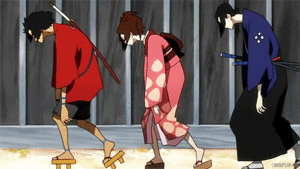 |
When the Levy end up engaged as front line troops things have already probably gotten to the point at which seppukku is the acceptable alternative to continuing the unequal fight.
The only partly-bright spot was the performance of the 4-hit heavy Infantry Unfortunately there were only 4 of them in the entire Samurai army so even when they succeeded in carving a blood-stained four-katana-wide gap in the Tamil line it was only a temporary respite from the waves of enemy troops rolling them up from both flanks. |
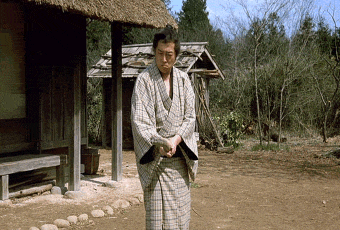 |
Two full commands of Samurai and Monks had been hurled into the small isolated formation of enemy troops at the foot of the hill seeking to sweep them away - but as the battle ebbed away even this small task had yet to be accomplished.
Maybe the Levy should have been used earlier ? They seemed to have the hang of rolling combat dice far more down pat than many of their better-equipped colleagues this afternoon.
But, when levy winning a combat is a noteworthy high point, the baseline is already pretty low. The Samurai slipped to defeat under the relentless onslaught and Sri Lanka came out on top in this edition of the Island war games...
These Samurai were painted by Lurkio painting service. Most of them are Old Glory, with some Baueda added in too. You can see many more photos in the 15mm Gallery, and a walk-through of how the Wall and Village were built elsewhere on this website.
Read on for the post match summaries from the Generals involved, as well as another episode of legendary expert analysis from Hannibal
Post Match Summary from the Samurai Commander

Looking back I struggle to see what we might have done differently. All of our Elite troops got into combat, we only charged the enemy Impetuous Swordsmen on one occasion in the entire battle (to get rid of a flank) and we had as much shooting as was possible before the pachyderms closed on us - but none of it worked.
At least we did work out a new way to use the Samurai Castle wall as the edge of the table rather than as a waterway, so it got in the pictures yet again - small comfort I admit, but sometimes crumbs are all the cake and eat it on offer.
I am looking forward to putting these guys in the drawer back home for the first time later today in a way which soothes my incipient wargamers OCD. After that I'm sure it won't be long until they are out again and giving the old luck business another try.
Hannibal's Post Match Analysis
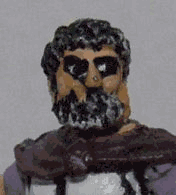 You utter idiot. How many times do we end up commentating on a game where you have lined up and left it to the dice gods to decide if you win or lose? To do do implies that there is nothing you could have chosen to do - when in fact you failed to take many, many decisions, the outturn of which was that you lack of choices meant the choices you defaulted to all turned out to be utterly wrong.
You utter idiot. How many times do we end up commentating on a game where you have lined up and left it to the dice gods to decide if you win or lose? To do do implies that there is nothing you could have chosen to do - when in fact you failed to take many, many decisions, the outturn of which was that you lack of choices meant the choices you defaulted to all turned out to be utterly wrong.
Knowing your enemy was a line of unmaneuverable troops, lacking in command and control and incapable of responding to a flanking attack, why did you then not look to maximise the impassible and difficult terrain on table and use it to break up their formation? Instead, you were fixated with using the stuff you had just bought and you ended up as a result with half the table covered with nice looking pieces which did you literally no good at all, but which ensured that the fighting took place in uneven ground - denying you a chance to use your unique and mobile cavalry arm as reserves to boot.
You also stepped forward into the combat, and spread your army along the entire front line - when even a babe in arms would have seen that you needed to concentrate in depth on a narrow frontage, against which the blunt and wide instrument of the opposition army would simply have been unable to redeploy.
Admittedly the dice were pretty terrible, but even so you picked the wrong terrain, picked the wrong deployment, and then failed to set up for a war of attrition with any reserves at all. This isn't bad luck, unless being born as a hopeless idiot counts as misfortune. I am just glad that the troops got safely back in the box before you had a chance to lose with them again.
Perhaps you might learn more if you read the battle reports from the people who actually won the event with the Tamils, instead of rehashing your own inane ramblings and repeating the same mistakes each competition?
See this game again on Youtube with commentary from the players
Stream or download a podcast featuring running commentary on this game from the Madaxeman.com Podbean site. Download this episode (right click and save)
Add your comments on these reports on the following forums
That's the end - so why not go back to the Match Reports Index and read some more reports?
You may also like....
Game 3 Samurai vs Feudal English
Game 4 Samurai vs Tamil Indian
View My Stats for My Match Reports Pages


